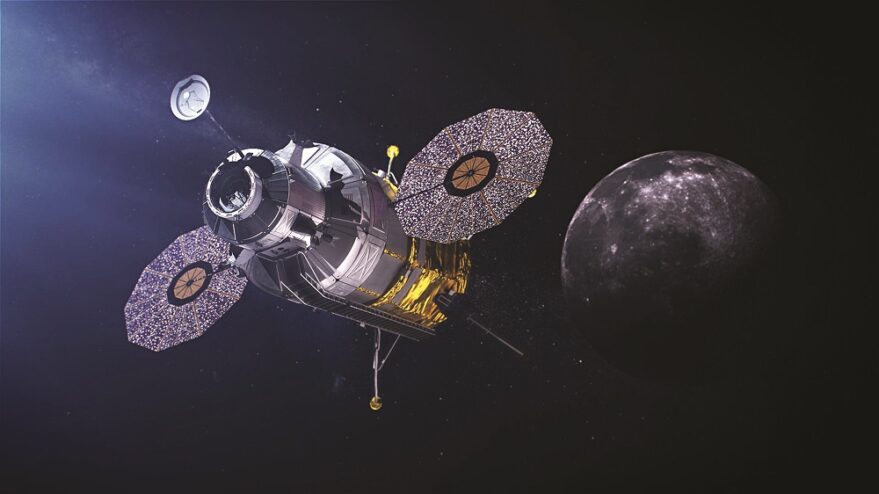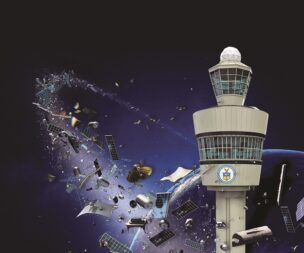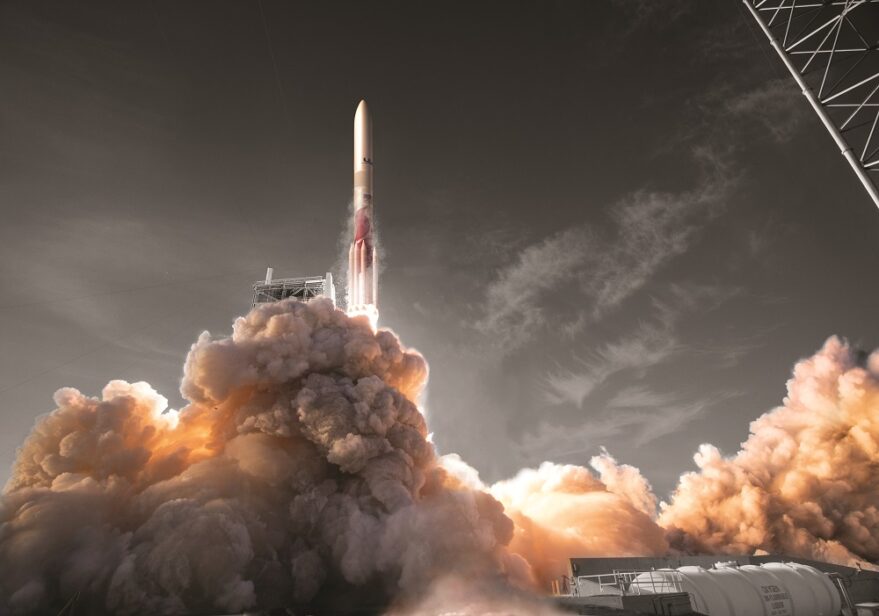The pandemic and economic recovery are sure to drive Biden’s initial agenda.
There are, nonetheless, several key space issues the new administration will have to address. NASA’s Artemis program is now unlikely to meet its 2024 human landing goal, giving the administration the opportunity to revisit the program while enhancing the agency’s Earth science work. The growing population of satellites and debris may lead the administration to reexamine the Trump administration’s approach to civil space traffic management. The Space Force will continue to mature but faces growing pains. The Pentagon will also finish programs, from new launch vehicles to LEO constellations, started under the Trump administration.

The future of Artemis
Ever since Biden won the presidential election in November, the space industry has speculated what his administration will mean for NASA’s Artemis program to return humans to the moon in 2024. The Democratic Party platform in August endorsed in general terms “NASA’s work to return Americans to the moon,” but made no mention of either retaining or changing the 2024 goal.
That decision may already have been made for him. In December, Congress passed a fiscal year 2021 spending bill that included $850 million for NASA’s Human Landing System (HLS) program, just a quarter of what the agency requested. NASA Administrator Jim Bridenstine had warned for months that keeping a 2024 human landing on schedule would be extremely difficult, if not impossible, without full funding for HLS.
There was, even before Congress passed the bill, widespread skepticism that a 2024 landing was feasible. “It was a long shot to begin with,” said Gwynne Shotwell, president of SpaceX, shortly after the election. She speculated that the new administration would defer a human lunar landing to “slightly later than 2024.”
A new approach might look something like what NASA was pursuing in the first half of the Trump administration, when it was focused on first building out the lunar Gateway, followed by human lunar landings around 2028. NASA has continued to make agreements with Canada, Europe and Japan on elements of the Gateway, so broader changes to human spaceflight plans that do away with the Gateway could be geopolitically costly for the Biden administration.
NASA may have to make decisions on the future of Artemis soon, perhaps before a new administrator is in place. The three companies that received HLS contracts last year — Blue Origin, Dynetics and SpaceX — are waiting on NASA to select who will proceed into full development. The agency previously said it would make decisions in the spring, but both the limited funding and the change in administrations could alter those plans.
At the same time, the Biden administration is widely expected to put greater resources into Earth science programs at NASA, as part of a broader emphasis on climate change. The party platform called for “strengthening” NASA and NOAA Earth observation missions “to better understand how climate change is impacting our home planet.”
That could create opportunities not just for Earth scientists but developers of spacecraft and related technologies. “With the administration’s planned focus on climate change, we expect growth in spacecraft and information systems related to understanding weather and climate change,” Eileen Drake, president and chief executive of Aerojet Rocketdyne, said at the AIAA SciTech Forum Jan. 11.
Exactly what form that new emphasis on Earth science will take is not yet clear. NASA already has a lengthy list of recommended missions from the previous Earth science decadal survey published in 2018 but has been slow to implement them because of limited budgets. Additional funding could accelerate those missions and feed into a broader climate change initiative.
Some have bolder expectations. “Managing the Earth’s ability to sustain human life and biodiversity will likely, in my view, dominate a civil space agenda for a Biden-Harris administration,” said Lori Garver, NASA deputy administrator during the Obama administration, shortly after the election.
However that climate change initiative develops, it likely means that boots on the moon will have to wait.

Space traffic management
At the end of the Obama administration four years ago, the outlines of a civil space traffic management (STM) system were beginning to take shape. The Federal Aviation Administration’s Office of Commercial Space Transportation was starting preparations to take on that work from the U.S. Air Force after a consensus by the White House and other government agencies that it was the best agency for the job.
That changed in June 2018, when the Trump administration issued Space Policy Directive 3 on civil STM. The administration directed the Air Force to transition civil STM activities to the Commerce Department, specifically its Office of Space Commerce. It concluded that the office could take on space traffic management, freeing up the FAA to oversee increasing commercial launch activity.
Two and a half years later, the office was finally ready to take on that challenge. Congress provided the office with $10 million in the fiscal year 2021 omnibus spending bill in December — less than the $15 million it requested but the first time it received any funding for STM work. Up until then, the Office of Space Commerce was laying the groundwork for STM, including coordination with the Space Force and meetings with industry, but needed funding to hire staff and develop systems.
“Next year will be largely what I’ll call a ‘building block’ year,” Kevin O’Connell, director of the Office of Space Commerce, predicted in October during a 0SpaceNews webinar. If his office got its requested funding, he projected that by the end of 2021 “we will have an initial architecture that is up and running.”
That assumes the Biden administration continues on that path. While the incoming administration has offered no hints of its views on the subject, there is nothing that would stop it from moving civil STM to the FAA or authorizing the Commerce Department to perform space traffic management, making it easy for the White House to change its mind.
However, there is now a consensus in the public and private sector that Commerce is the best place — or, at least, a good enough place — to handle civil STM. A congressionally mandated report by the National Academy of Public Administration, released in August, concluded Commerce was a better agency for civil STM than the FAA, NASA, or Defense Department.
With the growing amount of debris in orbit, along with emergence of megaconstellations like Starlink, most just want the government to move ahead as fast as it can. “In the end, it doesn’t really matter who does it, just that it gets done,” said Chris Kunstadter, global head of space for insurer AXA XL.
Another question will be how much attention Commerce gives to civil STM. Biden’s nominee for Secretary of Commerce, Rhode Island Gov. Gina Raimondo, hasn’t been involved in space in any way or shown an interest in the subject. However, the same was true for Trump’s nominee, financier Wilbur Ross, who never attended a launch before 2018. Yet he became a vocal advocate for the department’s work on space, including STM.

Next steps for U.S. Space Force
Among the final acts of the Trump administration was a celebration at the White House of the U.S. Space Force’s first anniversary, where Vice President Mike Pence announced the members of the service would be called guardians. The sixth branch of the armed forces was a darling of President Trump and no detail about the Space Force was too trivial to trumpet.
The Space Force will now enter its formative years with bipartisan support in Congress but under a new commander in chief with a different worldview. Biden is not expected to undo his predecessor’s prized achievement, but the Space Force will be lower on the totem pole.
“I don’t think the Space Force is in any danger of going away, but I don’t think it will be politically favored the way it was under Trump,” said David Burbach, associate professor of national security affairs at the U.S. Naval War College.
Over the next four years, the Space Force will stay busy building the service. In 2020, more than 2,200 former members of Air Force Space Command formally transferred to the Space Force. Another 3,600 are projected to transfer in 2021. The long-term goal is a Space Force of about 6,000 military members and 8,000 civilians. The service will be standing up a Space Systems Command to oversee acquisitions and plans to build a space intelligence center. The Biden administration later this year will have to provide recommendations to Congress on what space units from the Army and the Navy could be realigned under the Space Force.
More broadly, political appointees and military officials will continue to have to address questions on the Space Force’s role and reason for being.
“There is still a lot of confusion about the role of the Space Force,” said Burbach, noting that he does not speak for the government. Even though the space service’s job is to operate and defend U.S. satellites, “they run commercials showing astronauts going to the moon and exploring other planets. That’s not what the Space Force is going to do. They are not fighting laser battles in space.”
“The primary job for the Space Force right now is really focused on Earth,” said Scott Pace, former executive secretary of the National Space Council, during a recent National Security Space Association webinar. He noted the service has its hands full just carrying out its basic responsibilities to provide space-based services to U.S. military forces and allies.
A criticism often lobbed at the Space Force is that it created an expensive new bureaucracy to do the same work that the Air Force Space Command used to do, with the same people. But critics need to move on, said Deborah Lee James, former secretary of the Air Force during the Obama administration. “It’s not worth the bureaucratic churn to put it back the way it was,” she said last month at the Mitchell Institute’s West Coast Aerospace Forum.
Congress has made similar points and directed the Department of the Air Force and the Space Force to propose by May a revamped space acquisition process, a responsibility that will fall on Biden’s appointees. The fiscal year 2021 National Defense Authorization Act asks for specific recommendations for making space acquisitions move faster, in ways that capture innovations from the private sector.

National security space modernization
During the Trump administration, the Pentagon took important steps to modernize key national security space programs. For now, there is nothing to suggest Biden’s appointees — many of them veterans of the Obama administration — will reverse course on major programs, at least until they have a chance to dig through budgets and submit new proposals.
“We see no reason to think it won’t be full steam ahead,” said Mike Tierney, industry analyst at the defense and space consulting firm Velos. In 2021, “we’re going to get a lot of the same” simply because the incoming leaders are not going to have time to substantially amend Trump’s budgets until their second year in office.
Over the next four years, Biden’s Pentagon will oversee the transition of the National Security Space Launch program to a new phase where SpaceX will have a more prominent role flying military satellites to orbit and longtime incumbent United Launch Alliance will be tested to introduce a new launch vehicle, Vulcan, that the company promised will be ready in 2021. It will fall on the Space Force and the Biden administration to help SpaceX and ULA clear this hurdle and assure Congress the nation has the domestic launch vehicles it needs to reliably deliver critical national security satellites to orbit.
Sometime in 2024, the Space Force will start planning for a new heavy-lift launch competition. Biden’s administration could be in a position to evaluate whether emerging players like Blue Origin, which tried and lost in 2020, can win a spot in Space Force’s stable of launch providers.
Another item on the space agenda is the resiliency — or lack thereof — of U.S. space systems. This has been a much-discussed issue during the Trump administration amid warnings that U.S. satellites are vulnerable to jamming, cyberattacks and threats from anti-satellite weapons.
Former undersecretary of defense for research and engineering Mike Griffin pushed the Pentagon to invest in proliferated low-Earth orbit constellations, like those being built by private companies, to provide resiliency. Under Griffin, the Pentagon stood up the Space Development Agency to take on the design and early development of military systems in LEO. The young agency, which was opposed by the Air Force Association and others, is preparing to launch its first 28 satellites in 2022.
“SDA will get a fresh look,” Tierney said, but there’s no sign that the Biden team will be opposed to it. Once the SDA shows it can deliver on its promise to field a constellation in just two years, he expects it will be seen as the “agile, innovative new arm of the Space Force focused on proliferated LEO.”
The large “exquisite” satellites that have been the bread and butter of Pentagon space programs will not go away even if the SDA’s proliferated systems come to fruition. Under Biden, the Space Force will continue to acquire multibillion-dollar systems for missile warning, secure communications, and navigation. But there will also be parallel efforts to diversify the space architecture and use cheaper, smaller platforms as the private sector continues to drive down the cost of satellites and launch.
How the military leverages commercial space technology for national security will remain an issue over the next four years. A recent Aerospace Corp. space policy paper aimed at the Biden administration noted that the “increasing commercialization of space is presenting new opportunities for national security acquisition.” A trend to watch will be whether U.S. intelligence and defense agencies begin to seriously consider alternatives to the traditional model of hiring contractors to develop bespoke capabilities.
This article originally appeared in the Jan. 18, 2021 issue of SpaceNews magazine.



